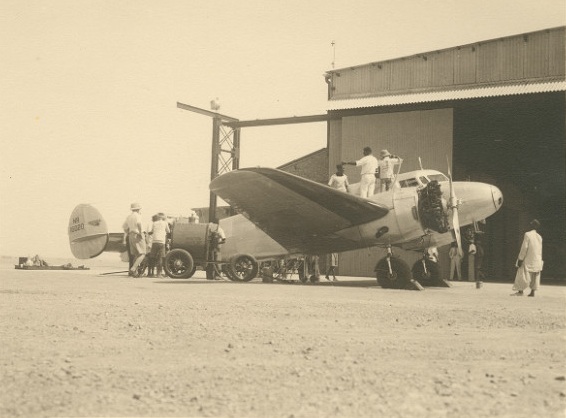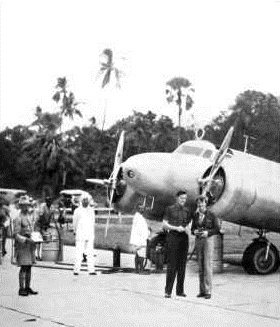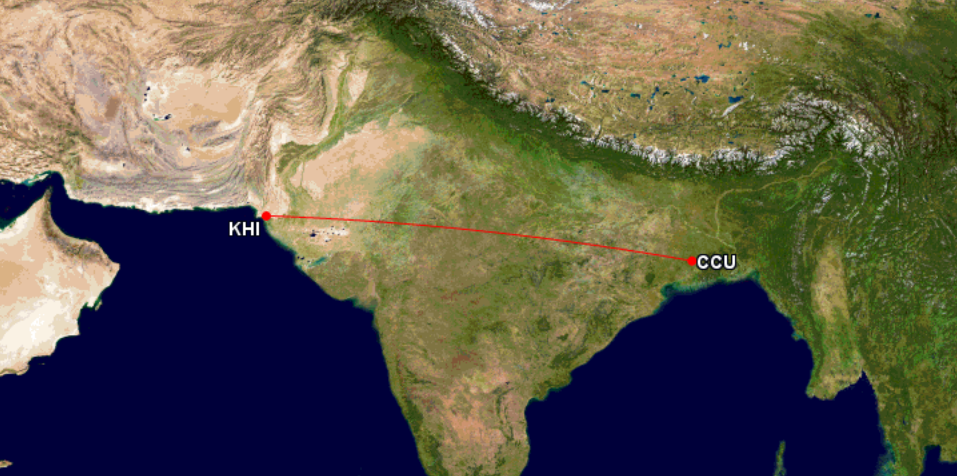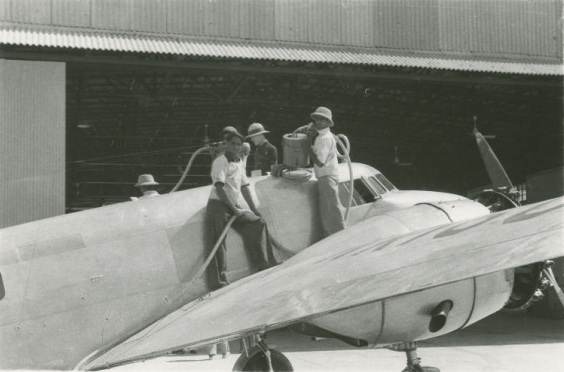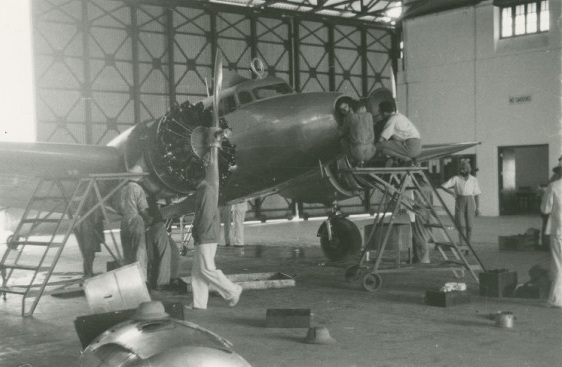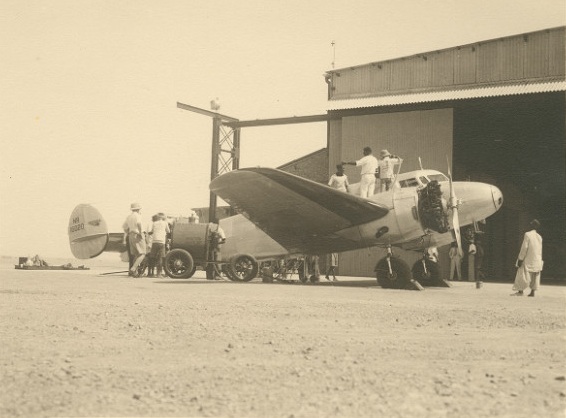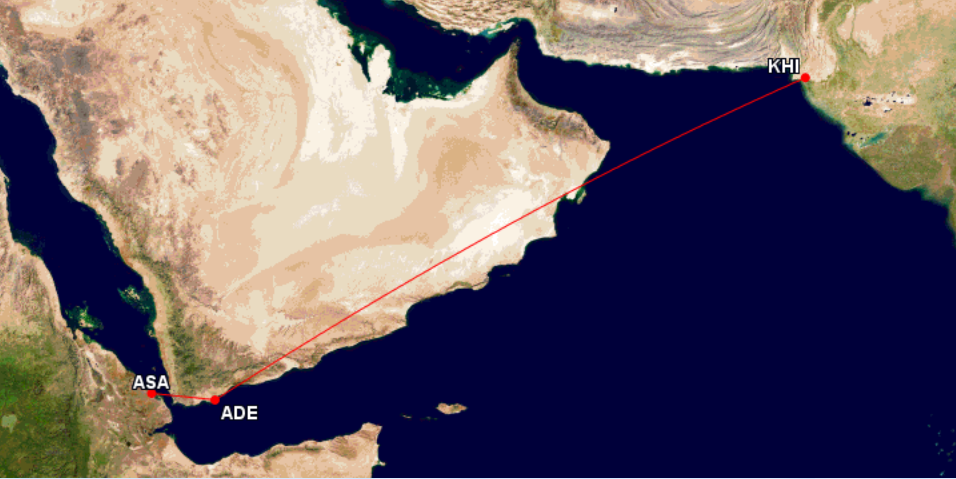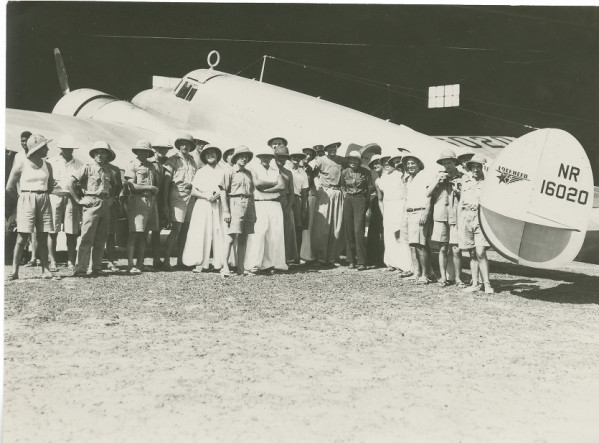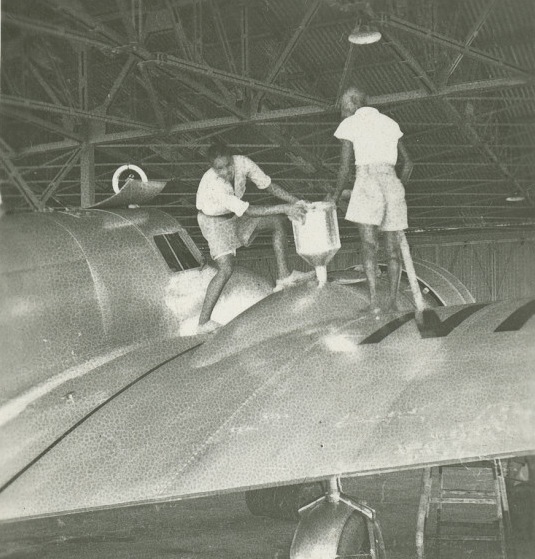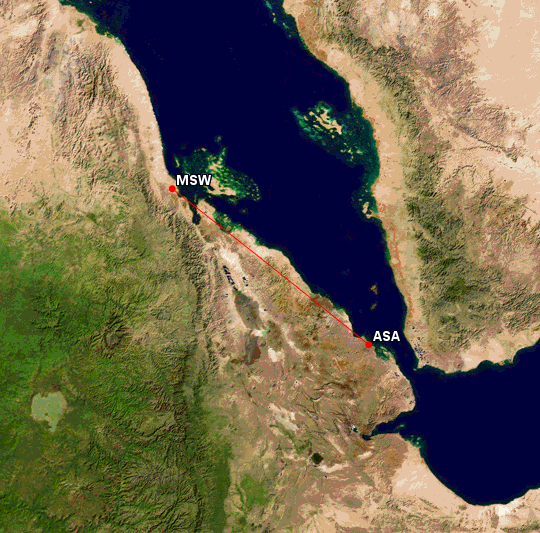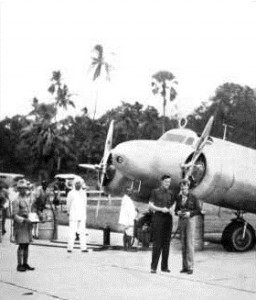 18 June 1937: Leg 20. Amelia Earhart departed Calcutta, India enroute to Rangoon, Burma. After a fuel stop at Akyab, she and Fred Noonan continued on their way, but monsoon rains forced them to return to Akyab.
18 June 1937: Leg 20. Amelia Earhart departed Calcutta, India enroute to Rangoon, Burma. After a fuel stop at Akyab, she and Fred Noonan continued on their way, but monsoon rains forced them to return to Akyab.
“When we reached the airport at dawn nocturnal rains had soaked it. The ground was thoroughly wet, precarious for a take-off. But meteorologists advised that more rain was coming and that likely we could dodge through the intermittent deluges of the day but that if we remained the field might become waterlogged beyond use. That take-off was precarious, perhaps as risky as any we had. The plane clung for what seemed like ages to the heavy sticky soil before the wheels finally lifted, and we cleared with nothing at all to spare the fringe of trees at the airdrome’s edge. For a time we flew through gray skies crowded with clouds that lowered at us as we passed over the many mouths of the Ganges and Brahmapurra rivers…Much of the way from Calcutta to Akyab we flew very low over endless paddies…Akyab is a picturesque place from the air. Two pagodas, covered with gold leaf, stand out…The airport is a port of call for most pilots passing this way. It has two runways and a large hangar. Imperial Airways and Air France stops regularly, and K.L.M., the Dutch line, when necessary to refuel or on account of the weather. . .
“We did not intend to stay at Akyab overnight. Instead we hoped to reach Rangoon at least, and started off from Akyab after checking the weather and fueling. Once in the air the elements grew progressively hostile. The wind, dead ahead, began to whip furiously. Relentless rain pelted us. The monsoon, I find, lets down more liquid per second that I thought could come out of the skies. Everything was obliterated in the deluge, so savage that is beat off patches of paint along the leading edge of my plane’s wings. Only a flying submarine could have prospered. It was wetter even than it had been in that deluge of the mid-South Atlantic. The heavens unloosed an almost unbroken wall of water which would have drowned us had our cockpit not been secure. After trying to get through for a couple of hours we give up, forced to retreat to Akyab.
“Back-tracking, we headed out to sea, flying just off the surface of the water. We were afraid to come low over land on account of the hills. When it’s impossible to see a few hundred yards ahead through the driving moisture the prospect of suddenly encountering hilltops is not a pleasant one. By uncanny powers, Fred Noonan managed to navigate us back to the airport, without being able to see anything but the waves beneath our plane. His comment was, ‘Two hours and six minutes of going nowhere.’ For my part, I was glad that our landing gear was retractable, lest it be scraped on trees or waves. . . .”
—Amelia Earhart

© 2019, Bryan R. Swopes
